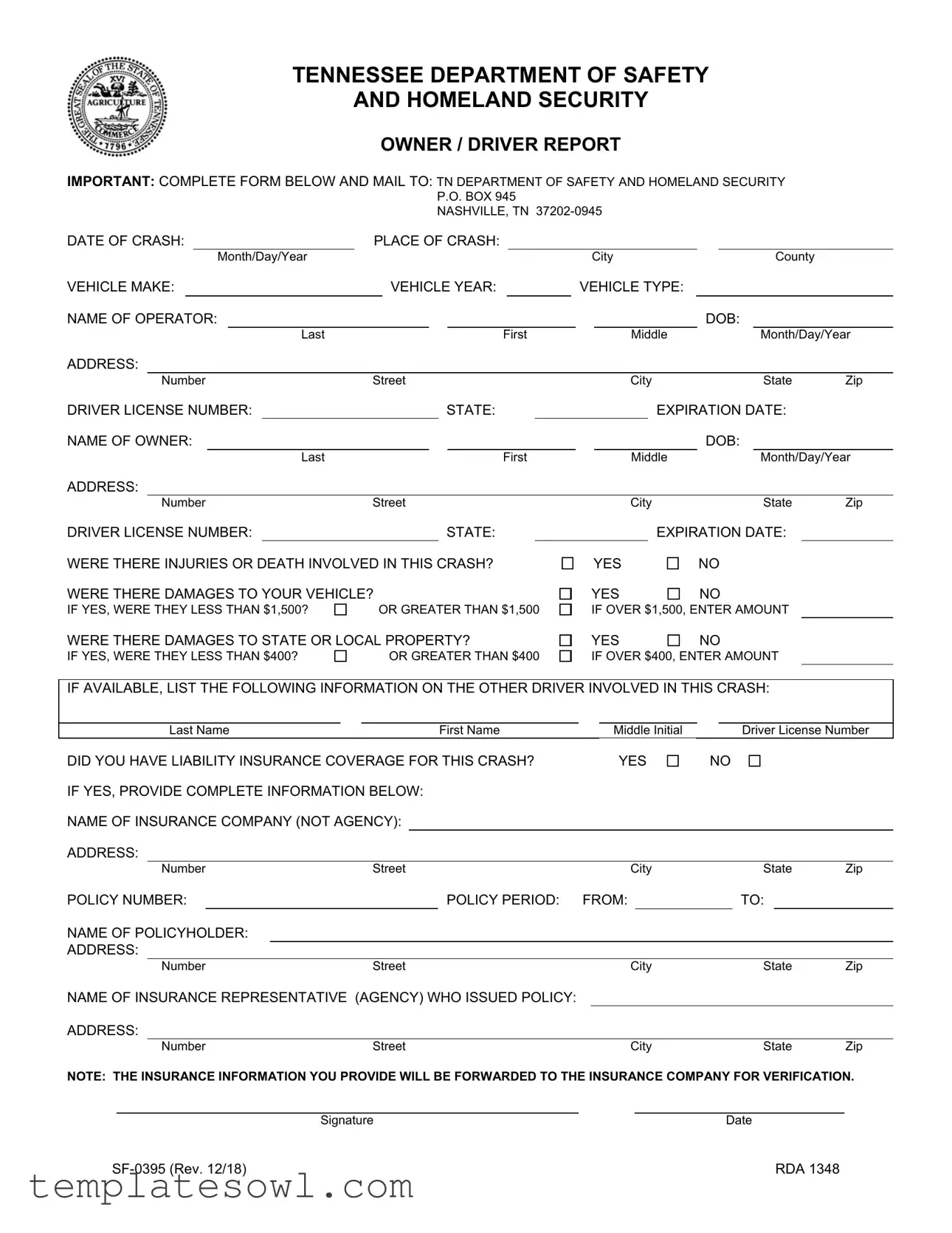What is the purpose of the Tennessee Driver form?
The Tennessee Driver form, also known as the Owner/Driver Report, is used to report automobile crashes in the state of Tennessee. It must be completed if there are injuries, fatalities, or property damage exceeding $400. Submission of this form is required within 20 days of the incident to the Department of Safety and Homeland Security.
Who is required to fill out this form?
Any individual involved in a car crash as either the driver or owner must complete this report. This includes situations where injuries or fatalities occur or where damages exceed $400, regardless of fault.
Where do I send the completed form?
The form should be mailed to the Tennessee Department of Safety and Homeland Security at P.O. Box 945, Nashville, TN 37202. This ensures that your report reaches the appropriate authorities for processing.
What happens if I do not file this report?
Failure to submit the Owner/Driver Report within the specified timeframe may lead to the suspension of your driver's license and vehicle registration. It is essential to ensure compliance to avoid any penalties.
What information is required on the form?
The form requires details including the date and place of the crash, vehicle information, operator and owner details, insurance coverage status, and any injuries or damages incurred. Accurate and complete information aids in the processing of your report.
Is there a fee to file this report?
No fee is required to submit the Tennessee Driver form. It is a government requirement for reporting accidents, and there are no costs associated with fulfilling this obligation.
What if I have liability insurance?
If you have liability insurance, you must provide the name of your insurance company, policy number, and coverage period. This information will be verified with your insurance company to confirm coverage during the incident.
Can someone else file the report on my behalf?
Yes, someone may file the report on your behalf. However, the individual filing will need to provide all necessary information accurately. It is important to ensure compliance with the filing deadline regardless of who submits the form.
What if there are injuries or death involved?
The report must be filed if there are injuries or fatalities resulting from the crash. This requirement is in place to document incidents for legal and insurance purposes. Follow up with local authorities for any further reporting that may be necessary.

